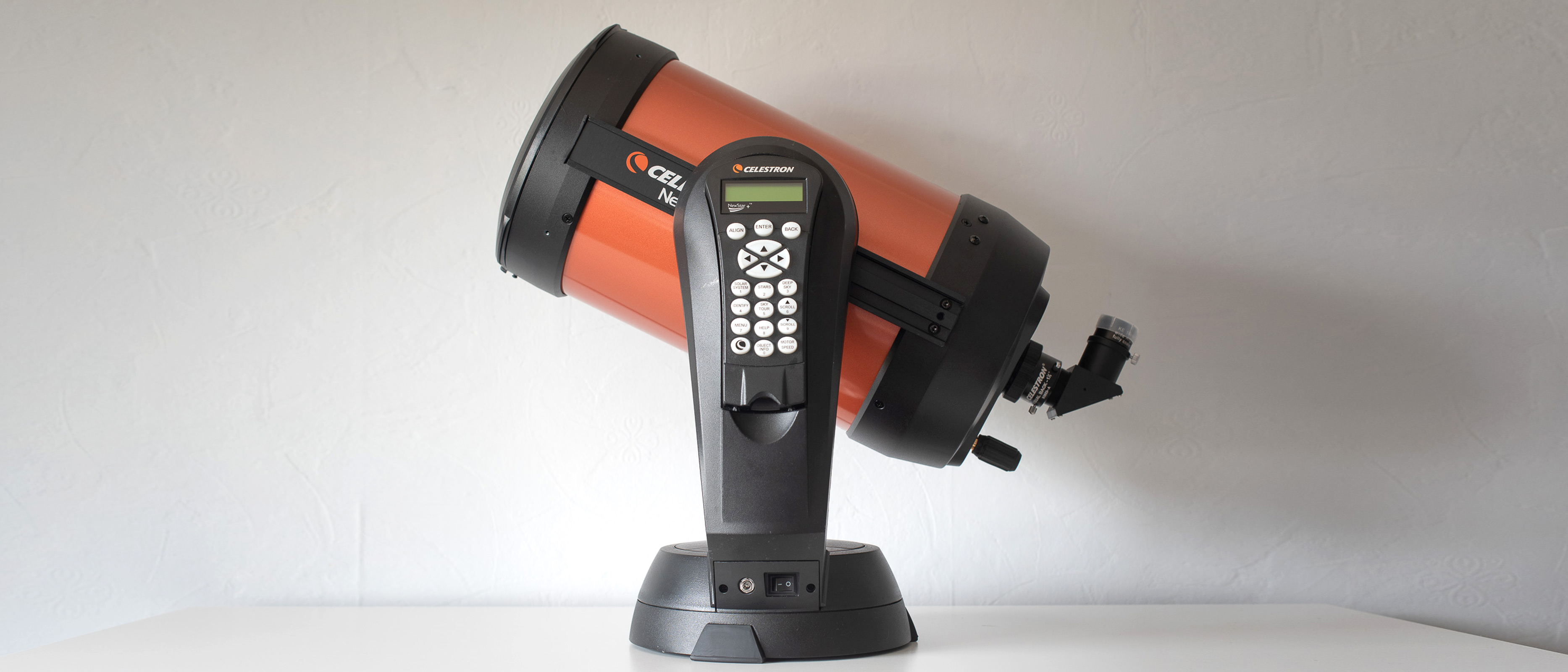Space Verdict
Although it's pretty expensive, this telescope will last for decades. Intermediate and advanced astronomers will enjoy the motorized functionality and the ability to expand their capabilities with add-on accessories. Astrophotographers will love it for deep sky astro, too.
Pros
- +
Incredibly bright views
- +
Sharpness across the entire field of view
- +
Pricey, but good value for money
Cons
- -
Will price some beginners out
- -
Slewing using the remote is a little laggy, but not much
Why you can trust Space.com
There is a reason the unmistakable orange-colored Celestron NexStar 8SE is the largest of the best-selling NexStar telescopes, and hailed by Celestron as the 'world's most beloved telescope'. The top-quality Schmidt-Cassegrain NexStar 8SE can absorb a phenomenal amount of light and enables users to see deep-sky objects far into the universe. Smaller aperture versions are available at 4, 5 and 6- inches with graduating costs. Of course, the smaller you go, the less light captured, thus making your views less awe-inspiring with each drop in aperture.
Optical design: Schmidt-Cassegrain
Aperture: 8-inches (203.2mm)
Focal length: 80-inches (2032mm)
Focal ratio: f/10
Highest useful magnification: 180x
Total kit weight: 32 lbs (14.48 kg)
Mount type: Computerized Altitude-Azimuth Single Fork Arm
A motorized single fork arm mount powers the scope that slews to your desired celestial object at the touch of a button on the handheld remote. You'll have to align it first, but Celestron's SkyAlign technology simplifies this three-star alignment process, and users simply need to use the finderscope with no prior knowledge of the heavens required.
There are ample accessories that can be added to the NexStar 8SE. The possibilities for intermediate and advanced astronomers are endless, and deep sky astrophotographers will love the smooth tracking of the motorized mount for their long exposures.
Celestron NexStar 8SE: Design
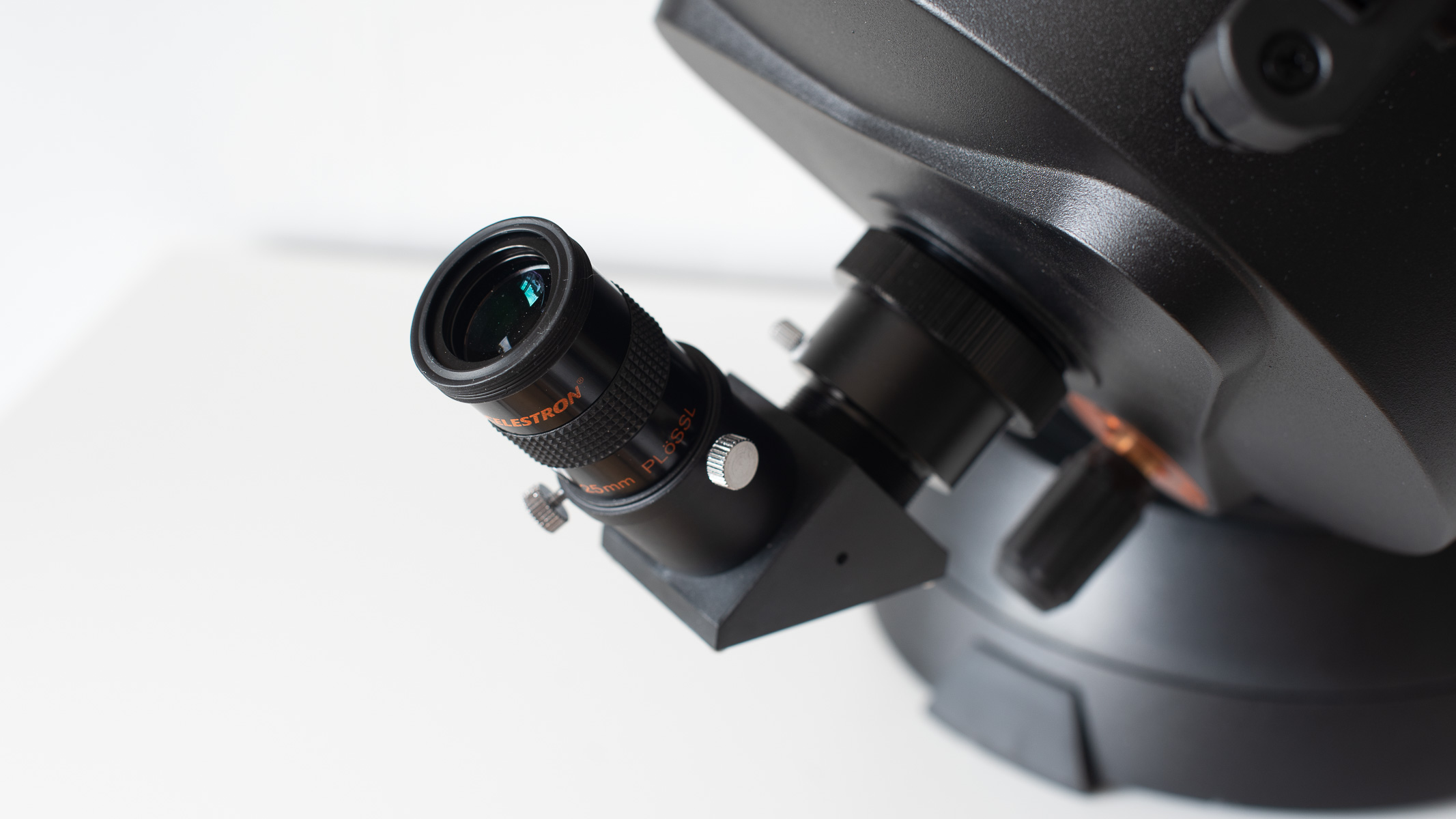
- Signature orange tube
- Hand controller which fits inside the arm of the fork mount
- Can be transported as a fully-assembled setup
Apart from the obvious and instantly recognizable orange tube (a color used by Celestron since the 1970s), one of the most striking things about the NexStar 8SE is its compact and practical size. The catadioptric construction (where refraction and reflection are combined) means that the physical tube can be kept short despite offering a long focal length. You can lift the whole assembled unit up under your arm and carry it to where it needs to be, and thanks to the clear, clutter-free body, you don't have to worry about knocking accessories off the telescope.
The NexStar+ hand controller fits nicely and firmly to the arm of the fork mount when not in use. We like the hands-on feel of using the robust feeling hand controller rather than using an app. The buttons, as is standard on these types of hand controller, are large and easy to use when out on cold nights and can even be programmed using gloves. Simply type in the number of the respective night sky object and the 8SE will smoothly and quietly slew to it in the sky — no fuss.
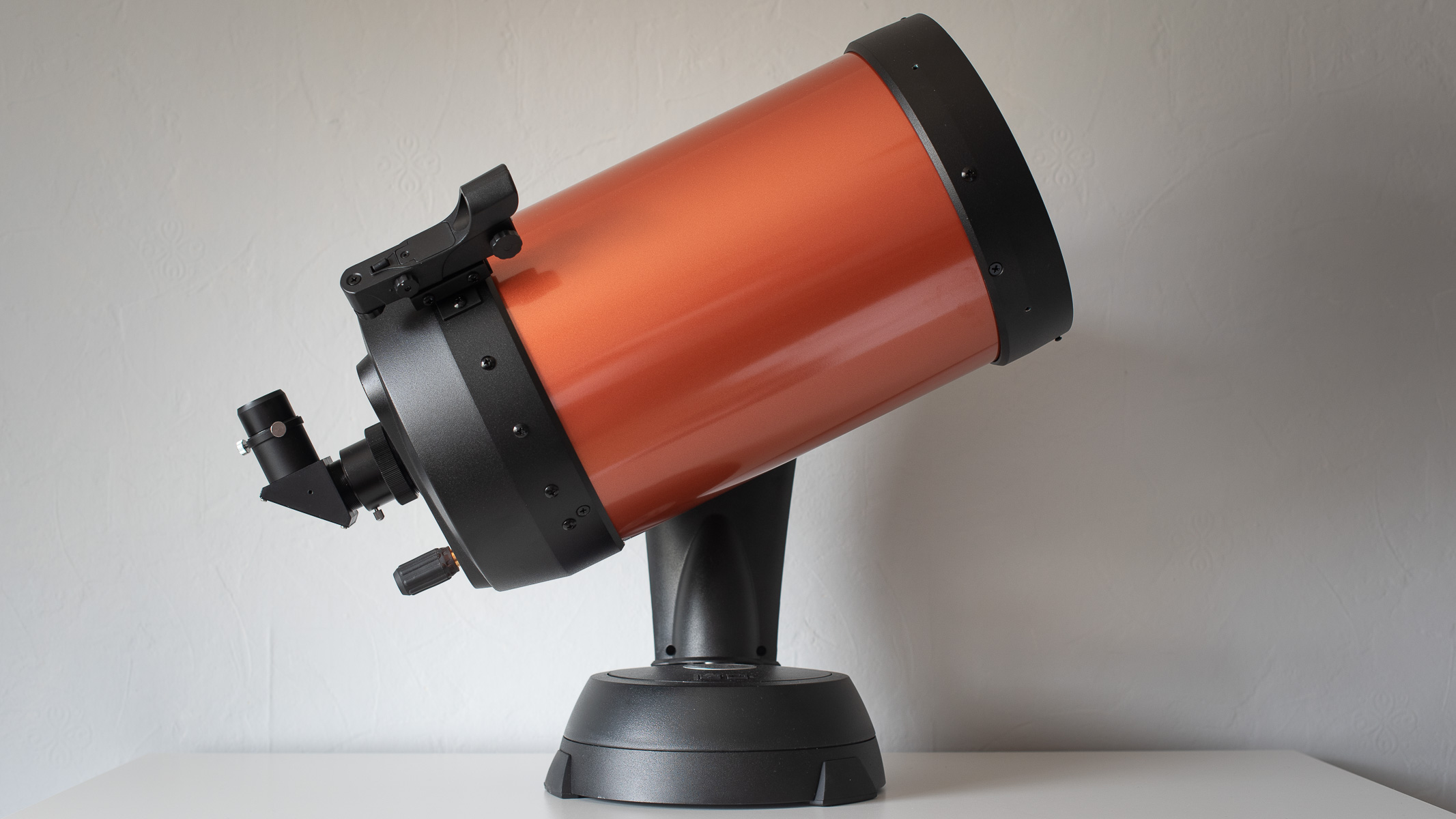
As we would expect, the steel tripod feels strong and rigid, which it needs to be to support the fairly heavy mount. Everything feels secure, which is a relief given this is an expensive bit of kit. The tripod can be broken down into separate components to aid ease of transportation.
Celestron NexStar 8SE: Performance
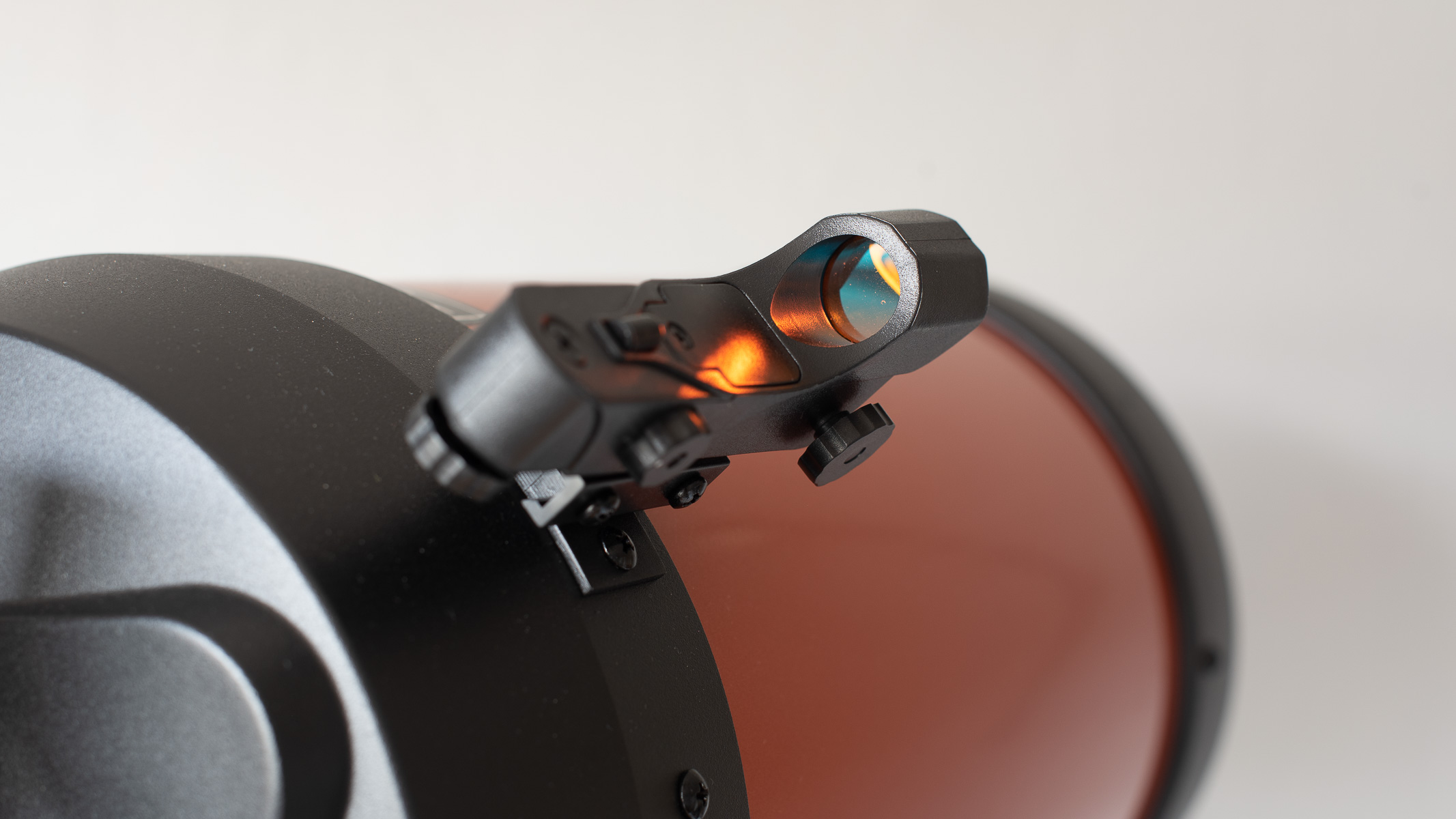
- Outstanding optics
- Good quality hand controller
- Slightly tricky to align if you're not used to it
The first task when reviewing this telescope was getting it aligned. Plug the telescope in and turn it on. The hand controller asks you to select your desired language. After that, use the up and down arrows to choose the method of alignment. Select your city and country, enter your time (in 24hr format) and select whether your locale is on daylight savings or not and finally enter the date.
Here is when the hand controller will prompt you to select a star. Here, some knowledge of the night sky is advantageous but not crucial, as you can use a planetarium app such as Celestron's SkyPortal app to help you identify which bright star you are looking at, and thus which to select on the hand controller, and which to align with your red dot finder. You then repeat this for your second star.
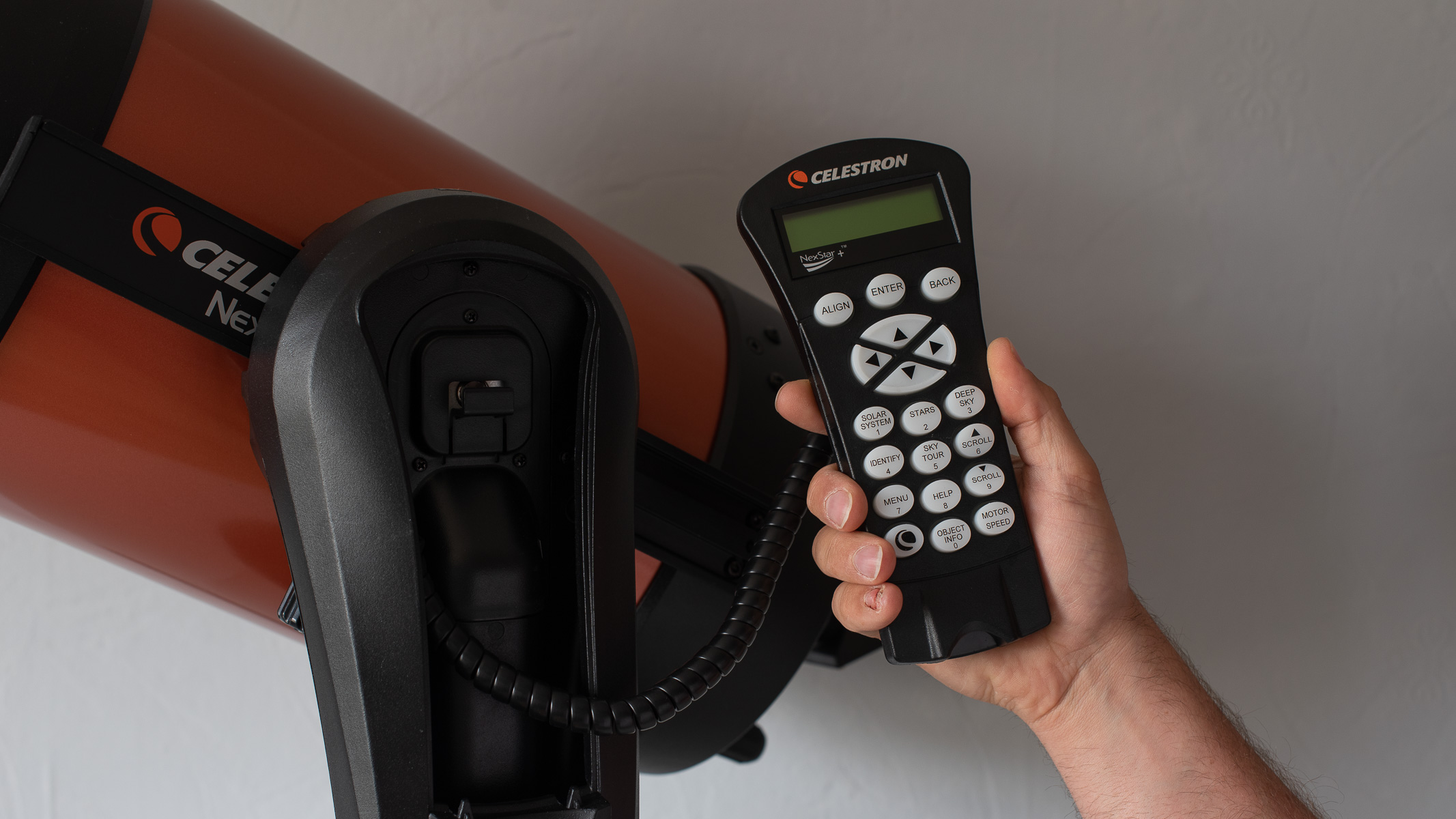
Once aligned, using the hand controller, you can select any celestial object in the sky (categorized under solar system, stars or deep sky), and your telescope will automatically slew to them. You can also have a 'sky tour' which chooses which interesting objects to show you.
This process might seem daunting for a beginner, but if you follow the supplied instructions to the T, you shouldn't encounter any problems.
1.25" (25mm) Plossl eyepiece
StarPointer Finderscope
90-degree Star Diagonal
Steel tripod with accessory tray
2 year warranty
During our review, our sky in the Northern Hemisphere didn't get dark enough for deep-space objects. Instead, we focused our attention on the easy-to-spot moon, so that we could get a real-life feel for the views despite the conditions not being ideal for sky watching. With the included eyepiece, we could get brilliantly sharp and bright views of the lunar surface.
We tested the slew rate and accuracy. Although there was a bit of lag between pressing our desired subject on the controller, and the motor starting to turn, we were impressed with the motor's smoothness when both slewing and object tracking. This is ideal for astrophotographers taking long exposures to stack together to create mind-blowing deep-sky photos.
Celestron NexStar 8SE: Functionality
- 8 x AA batteries required
- Easy to assemble and disassemble
- A useful red dot finder is included
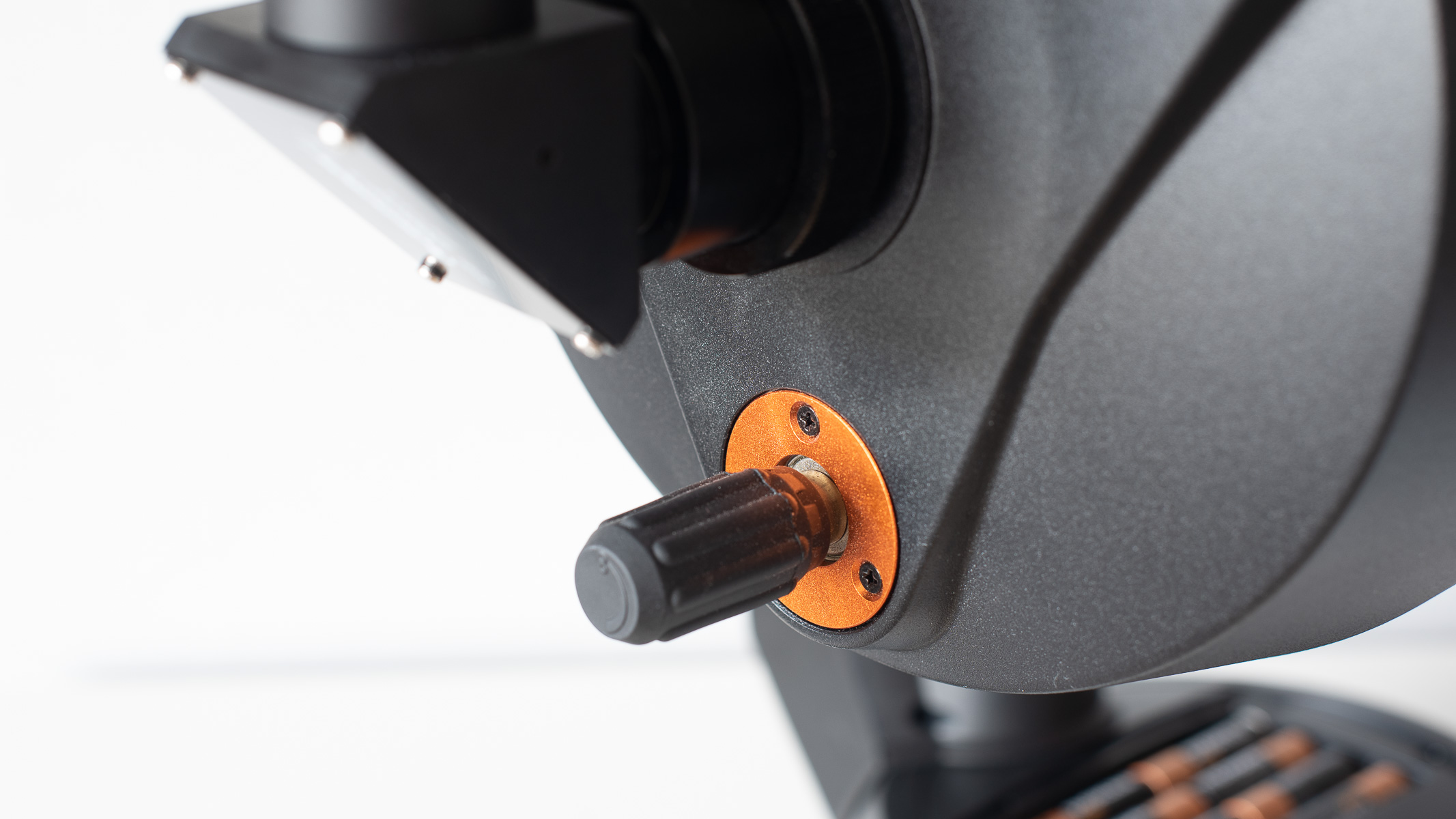
As mentioned, after aligning for the first time, one of this telescope's most desirable characteristics is the quick set-up process. It can be stored away and won't feel like a chore getting set up again when you want another night of sky watching. The supplied red dot finderscope is very simple to use, with a clear red dot and mounting easily to the rear of the tube. It doesn't look like much, but it is surprisingly effective. The focus knob on the scope is large and tactile, so easy to alter thanks to the knurled rubberized texture, even when wearing thick gloves.
The telescope does require a whopping 8 x AA batteries. You'd probably want to invest in rechargeable batteries and a battery charger if you are going to be regularly sky watching as the cost of replacing regular batteries would quickly add up. It would be nice to see Celestron giving a Lithium-ion battery here but realize that this might push the price up significantly which is likely why it relies on AAs.
Should you buy the Celestron NexStar 8SE?
The Celestron NexStar 8SE is a fantastic scope and one that would suit a beginner, intermediate or advanced sky watcher. Something simple enough for a beginner to get to grips with, but also please an advanced sky watcher is quite hard to come by.
It is also a fantastic option for astrophotographers, thanks to the smooth and accurate tracking. Although it does carry a fair amount of weight, the scope can be packed away and set up in no time, so there's no need to leave it out taking up precious space in your home.
If the Celestron NexStar 8SE isn't for you
The NexStar 8SE isn't a budget bit of kit. It's a significant investment. Unless you know you'll stick with skywatching or astrophotography for the long haul, cheaper alternatives are available and might be more appropriate.
Check out the Celestron Astro Fi 102 which we reviewed recently, as this is much cheaper but still utilizes a motor to show you celestial objects in greater detail. This model uses a smartphone app (using in-built Wi-Fi) rather than an integrated hand controller straight out of the box, but you can link it up to a hand controller instead if you prefer something more tactile than a shiny rectangle.
For those who plan to develop their astronomy experience, plenty of eyepieces, mounts and tripods can be used to enhance the capabilities of the NexStar 8SE so it should meet your needs for a lifetime.
In conclusion, it's probably one of the best scopes available if you can afford it. If you won't benefit long term, choose a simpler, cheaper model. For more inspiration, check out our best telescopes guide.
Join our Space Forums to keep talking space on the latest missions, night sky and more! And if you have a news tip, correction or comment, let us know at: community@space.com.

Jase Parnell-Brookes is the Managing Editor for e-commerce for Space and Live Science. Previously the Channel Editor for Cameras and Skywatching at Space, Jase has been an editor and contributing expert across a wide range of publications since 2010. Based in the UK, they are also an award-winning photographer and educator winning the Gold Prize award in the Nikon Photo Contest 2018/19 and named Digital Photographer of the Year in 2014. After completing their Masters degree in 2011 and qualifying as a teacher in 2012, Jase has spent the last two decades studying and working in photography and publishing in multiple areas, and specializes in low light optics and camera systems.
